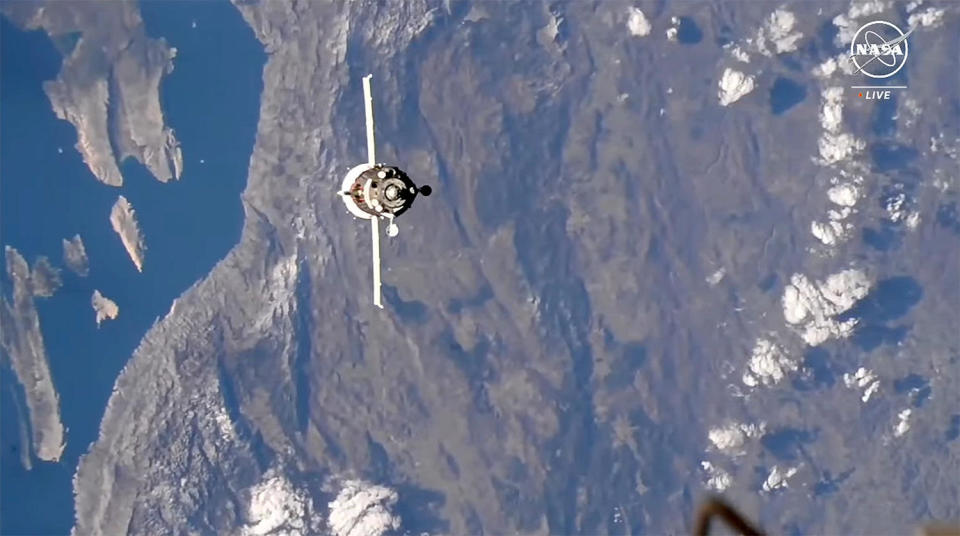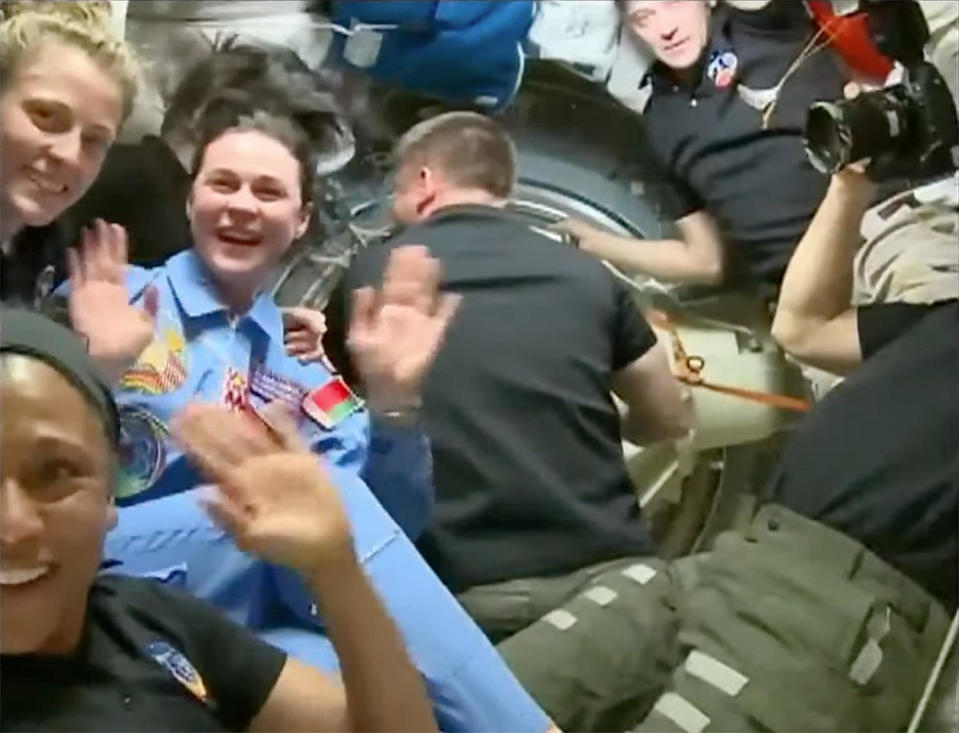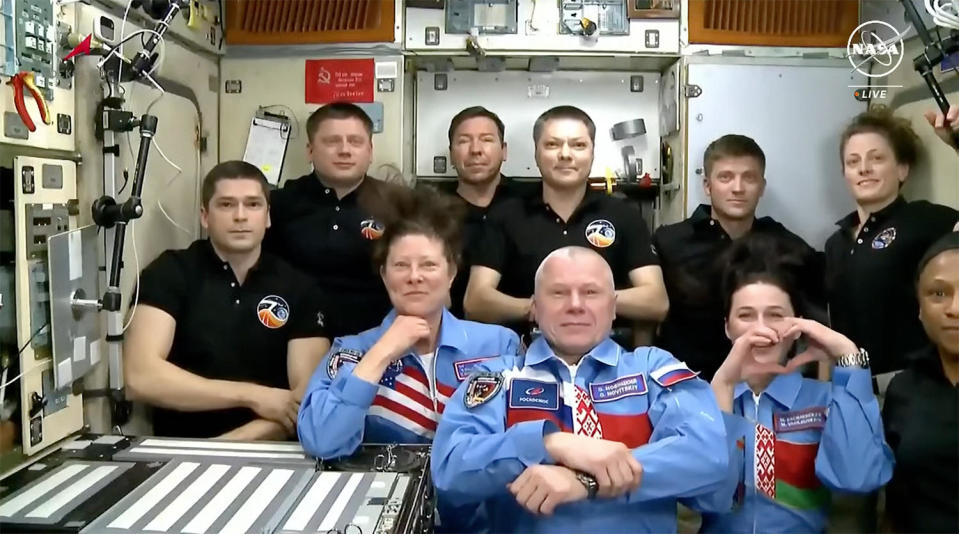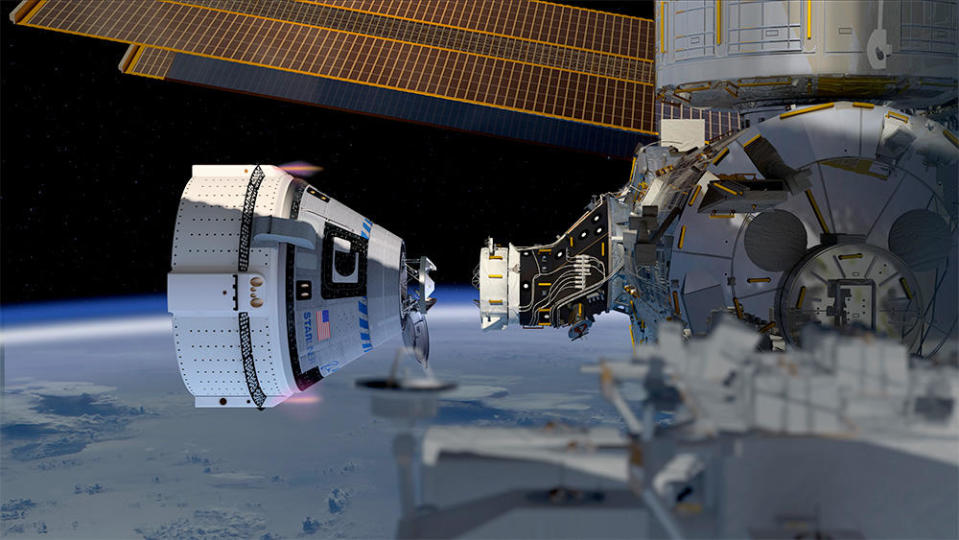Two days after launch, a Russian Soyuz crew shuttle caught up with the International Space Station on Monday and moved in for a picture-perfect Å, bringing two short-term crew members as a NASA astronaut began a six-month stay in orbit.
With Soyuz MS-25/71S commander Oleg Novitskiy, guest pilot of Belarus Marina Vasilevskaya with NASA veteran Tracy Dyson monitoring the automated approach, the spacecraft slid in below and docked at the Earth-facing Prichal module at 11:03 a.m. EDT

After leak checks to verify an airtight structural seal, hatches were opened and the Soyuz team floated into the station, greeted by the ISS commander Oleg Kononenko, cosmonauts Nikolai Chub and Alexander Grebenkinalong with NASA astronauts Loral O’Hara, Matthew Dominick, Michael Barratt and Jeanette Epps.


“Marina, you opened the door to Belarus being in space,” radioed the Russian mission control from Moscow. “So have a great and safe mission. Enjoy your work, your free time. We are so proud of you. All the people of Belarus are proud of you.”
Vasilevskaya, smiling broadly, said through an interpreter, “I am so happy that Belarus has gone to the International Space Station safely and soundly.”
“It took us two days, but we are in great spirits, and I am very happy that it went this way. I loved all the aspects of it. … We are so happy that you supporting us. We are very happy and it gives us strength.”
NASA’s mission control team congratulated Novitskiy on his safe return “to your second home. We’re glad to see you back on the station.”
“Tracy, it’s so great to see your smiling face back on ISS,” said NASA spacecraft communicator Costa Mavrides. “Everyone here in Houston, including your family and friends is in the viewing room, beaming with pride watching the screen.”


There was Kononenko, Chubb and O’Hara launched last September aboard the Soyuz MS-24/70S ferry and Dominick, Barratt, Epps and Grebenkin arrived earlier this month aboard SpaceX’s Crew Dragon.
Dyson replaces O’Hara, who will return to Earth April 6 with Novitskiy and Vasilevskaya aboard the older MS-24/70S spacecraft that carried her into orbit last year. Dyson will come home this September with Kononenko and Chub using the MS-25/71S spacecraft delivered by Novitskiy.
The Soyuz swap was required because Kononenko and Chub are halfway through a one-year stay aboard the station, and the Russian crew ships are not certified for flights lasting longer than six months.
After the departure of Novitskiy, Vasilevskaya and O’Hara, the station’s NASA flyers will continue with ongoing research and prepare for the arrival of the Boeing Starliner spacecraft in early May, the first piloted flight of an alternative NASA-sponsored alternative Crew Dragon SpaceX. .
After two unmanned test flights and extensive work to correct software problems and unexpected trouble with corroded propulsion system valves, NASA and Boeing officials say the spacecraft is finally ready to carry astronauts to and from the station.


For the upcoming “crew flight test,” astronauts Barry “Butch” Wilmore and Sunita Williams will put the ship’s automated and manual control systems to the test during the trip to and from the station, spending about 10 days aboard the outpost .
If the flight is successful, the Starliner will be certified for use in future crewed rotation missions to the ISS, replacing SpaceX’s Crew Dragon and providing NASA with redundancy in sending astronauts to and from the space station.
“Today, all of our Crew Dragons are launching on (SpaceX Falcon 9 rockets),” said space station Program Manager Dana Weigel. “If there was a problem with F9, for example, and we had to stand down for a while … if we had another vehicle we could continue flying.”
And that would help ensure a permanent US presence aboard the space station.
“So that’s why, when we talk about having multiple providers, why it’s so important for us to have continuous capacity,” said Weigel.
Christian Cooper, the “Extraordinary Birder”
Author “James” Percival Everett on race, language and art
Doris Kearns Goodwin on “An Unfinished Love Story”